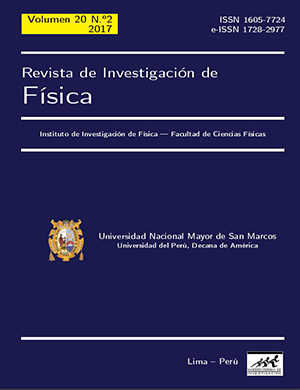Seismic Source of the Chile 2010 Earthquake from Inversion of Geodetic Data and Observations
DOI:
https://doi.org/10.15381/rif.v20i2.15166Keywords:
Earthquake, crustal deformaction, geodetic inversionAbstract
On February 27, 2010 an earthquake of magnitude 8.8 Mw (according to USGS) shook the center-southern region of Chile with a balance of more than 500 deaths. As a coseismic effect, a tsunami was generated which destroyed many coastal villages, as well as the permanent crustal deformation. This coseismic deformation can be quantified by geodetic measurements: GPS, field observations at the littoral and InSAR satellite interferometry data. From the analysis and processing of the geodetic data it is possible to obtain the parameters that characterize the distribution of the seismic source through an inversion process, in which the simulated data is compared with the observed data using the non-negative least squares method. The results show the existence of two main asperities located to the north and south of the epicenter. The maximum slip or dislocation was 17.3 m located in the northern side of the rupture area. The calculated "geodetic"scalar moment is 1.25 × 1022 Nm, which is equivalent to a magnitude of 8.7 Mw.Downloads
Published
Issue
Section
License
Copyright (c) 2018 César Jiménez, Miguel Saavedra, Nabilt Moggiano, Nick Moreno

This work is licensed under a Creative Commons Attribution-NonCommercial-ShareAlike 4.0 International License.
THE AUTHORS RETAIN THEIR RIGHTS:
a. The authors retain their trademark and patent rights, as well as any process or procedure described in the article.
b. The authors retain the right to share, copy, distribute, perform and publicly communicate the article published in the Revista de Investigación de Física (for example, place it in an institutional repository or publish it in a book), with an acknowledgment of its initial publication in the Revista de Investigación de Física.
c. The authors retain the right to make a subsequent publication of their work, to use the article or any part of it (for example: a compilation of their works, notes for conferences, thesis, or for a book), provided that they indicate the source. of publication (authors of the work, journal, volume, number and date).






